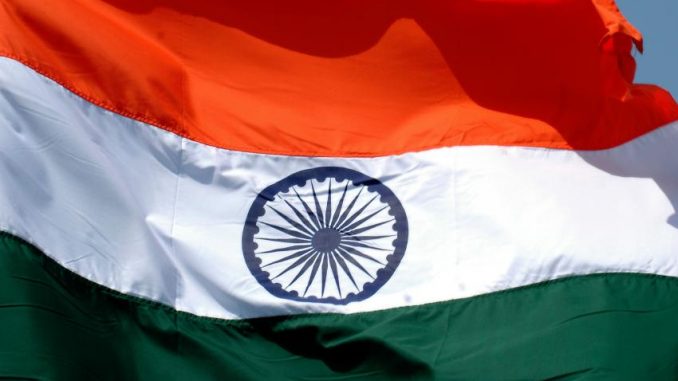
IThe Madhya Pradesh bypoll results may have led the Congress to harbour false hopes for the 2018 elections, but Shivraj Singh Chouhan remains well-placed for a win.
The Congress party retained the Mungaoli and Kolaras seats in the recently concluded bypolls in Madhya Pradesh. This has prompted party leaders at both the state and central levels to claim that the Congress will dislodge Shivraj Singh Chouhan’s government in the state assembly election due later this year. Some political commentators have also declared the return of Congress in the state on the back of its performance in just two seats. Despite the results, Chouhan is comfortably placed to win a fourth consecutive term and solidify his position as the longest-serving Bharatiya Janata Party (BJP) chief minister of a big state.
1. Significant Decline In Margins In Scindia’s Den
Mungaoli and Kolaras seats were won by the Congress party in 2013 state elections. In 2014 Lok Sabha polls, the party was leading in both the assembly segments and increased its vote share, from 51.2 per cent to 61 per cent in Mungaoli and 46.5 per cent to 57.4 per cent in Kolaras. The Congress managed this improvement despite the (Narendra) Modi wave gripping the nation, which only highlights that these are stronghold seats of the Congress and Jyotiraditya Scindia.
The party only managed to scrape through this time, in Mungaoli by 2,000 votes and Kolaras by 8,000-odd votes, a steep decline from the lead it enjoyed in 2014 as seen in the chart below. In Kolaras, the party also benefited from the sympathy factor having fielded the son of the deceased ex-legislator.
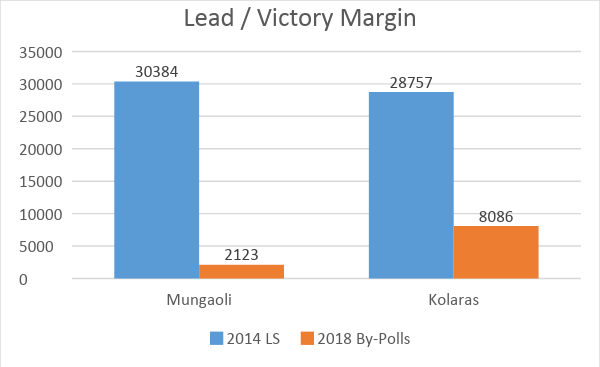
Source: www.indiavotes.com
2. BSP Votes Have Shifted To BJP
What is even worrisome for the Congress is that the BJP has managed to pocket a significant chunk of Bahujan Samaj Party (BSP) votes in both these seats. The BSP has emerged as the third force in the state, bagging 5 per cent to 7 per cent vote share in the last three elections. The party received 22 per cent Dalit support in 2013. In Kolaras, the party candidate received 15 per cent and in Mungaoli 8.8 per cent vote share. These were essentially anti-BJP votes. With the BSP not putting up candidates in the bypolls, the Congress expected these votes would transfer to them. But that didn’t happen as seen in the tables below.
The BJP’s support among Dalits has been increasing nationally due to the decline of the BSP and these bypolls suggest that the party has been able to replicate the trend in Madhya Pradesh and win the support of Dalits who account for 16 per cent of the population of the state. The dent in the BSP vote bank by the BJP will increase the gap with the Congress and provide an added cushion in the state election later this year.
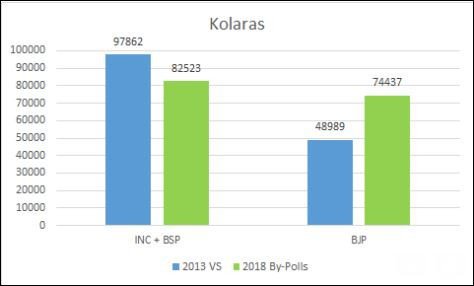
Kolaras
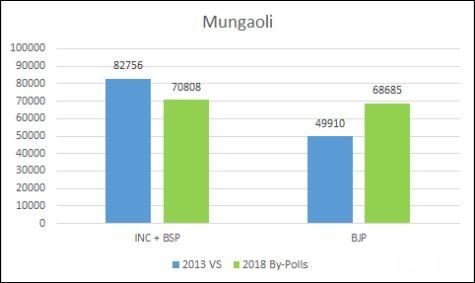
3. Infighting Within Congress Unit
It’s an open secret that the Congress is a divided house in Madhya Pradesh. It has seven to eight prominent leaders who are running their show independently without any coordination. These include Kamalnath, Digvijaya Singh, Jyotiraditya Scindia, Arun Yadav, Ajai Singh, Jitu Patwari, and Kantilal Bhuria. Kamalnath and Scindia are pitching to be announced as the party’s face in the state. Yadav has on more than one occasion declared that the party won’t be announcing any chief ministerial candidate and will contest on the basis of collective leadership. Singh is on a spiritual Narmada yatra and nobody knows what trick he will pull on his return. While elections are increasingly becoming presidential style, this could turn out to be a big shortcoming for the Congress.
4. Massive Development
Under Chouhan’s leadership, the state has witnessed a significant change in the last 12 years. Madhya Pradesh has recorded the second-fastest gross domestic product (GDP) growth in India, after Gujarat, in the last five years (2013-2017), averaging 8.1 per cent against the latter’s 6.9 per cent.
The state is among the five big ones which has been able to contain inflation at below the national average, at 6.6 per cent, against 6.8 per cent. The government’s performance on the price rise front is expected to reap benefits as it was the biggest issue in the 2013 elections (20 per cent voters). The state no longer carries the BIMARU tag, used to indicate poor economic conditions in states, and boasts of a strong network of roads, highways, and power plants.
5. Innovative Government Schemes For Anchor Voting Segments
Chouhan belongs to a farmer family – perhaps the reason why the state boasts of the highest agricultural growth among states in India. It has won five consecutive Krishi Karman awards. The success story of irrigation in the state is a case study in itself. The government recently launched ‘Bhavantar Bhugtan Yojana’, which compensates the farmer for the decline in prices below the minimum support price. Fifteen lakh farmers have benefited from the scheme and have been disbursed Rs 1,500 crore. NITI Aayog is studying the scheme and this could be replicated at the national level and by many states in the coming years.
Chouhan enjoys huge support among womenfolk, 2+ per cent compared to men. His schemes like Ladli Laxmi Yojana and Kanya Vivah Yojana have been a success in improving the sex ratio in the state and providing financial security to the girl child. He has strongly pitched for death sentence to rapists of minor girls aged 12 years or below, which is awaiting presidential assent.
The Madhya Pradesh government has also launched an ambitious scheme, ‘Medhavi Vidyarthi Yojana’, through which it pays the fees of students for higher studies. This has helped youth who would have otherwise dropped out of schools or colleges due to financial constraints. Some 30,000 students have benefited from the scheme so far.
6. The Shivraj Factor
Chouhan has a mass appeal, which may be difficult for a Congress leader in the state to match. He enjoyed a 20 per cent lead over Scindia in 2013. More than 20 per cent of the traditional Congress supporters also wanted to see Chouhan as the chief minister in 2013.
The Modi factor was not visible in the state in 2014 Lok Sabha elections. Only 15 per cent of the BJP voters said, in a CSDS survey, that they would not have voted for the BJP had Modi not been the prime ministerial candidate. The national average was 27 per cent. The performance of the BJP, bagging 27 of the 29 seats, was a combined result of the Modi factor and the Shivraj factor.
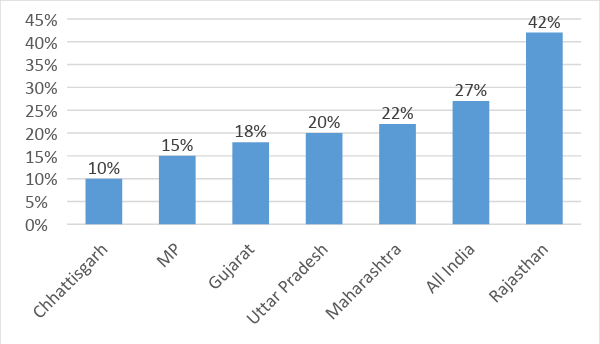
Source: CSDS Post Poll Report
So, managing to retain two seats in their backyard and partly due to the sympathy factor is by no means the kind of achievement that the Congress party is saying it is. One of the more prominent themes emerging from the polls is the transfer of BSP votes to the BJP. This, along with other factors discussed here, means that Chouhan is still well-placed for a win at the polls due later this year.
The article was first published in Swarajya.
Click HERE to view more.
You can publish this article on your website as long as you provide a link back to this page.

Be the first to comment